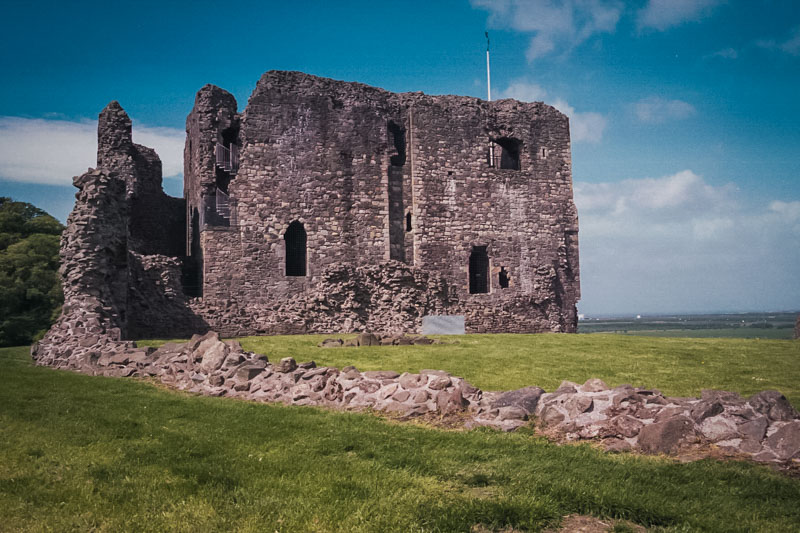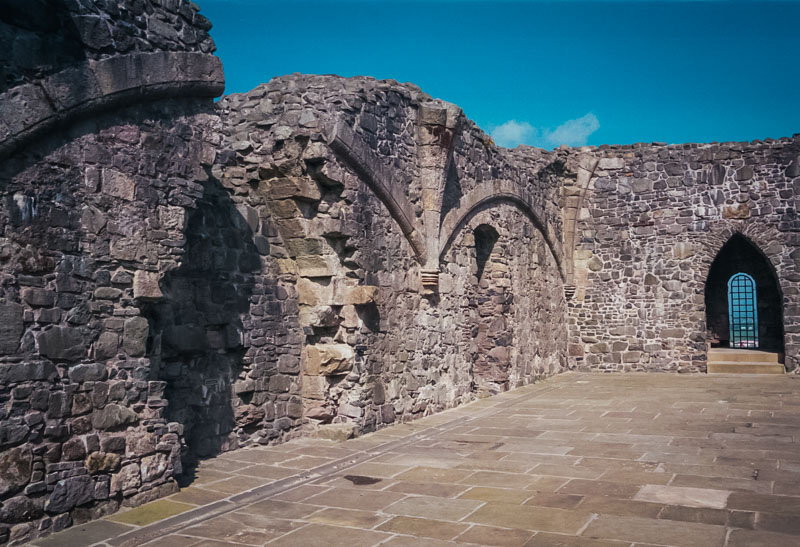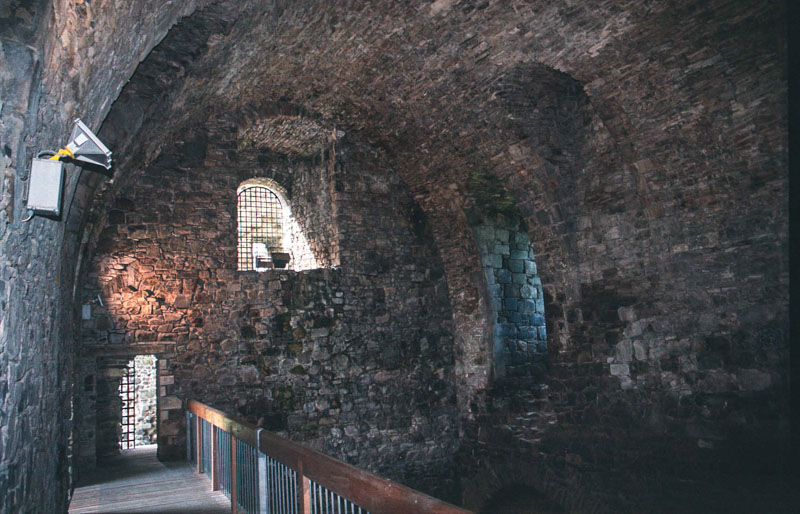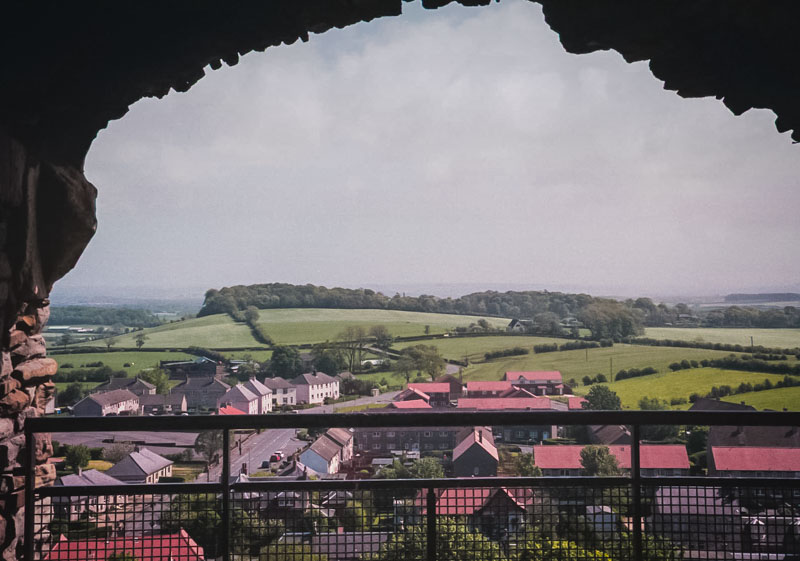
Dundonald site high atop a very steep hill overlooking the town of Troon — truly a commanding view. The day we visited it was horrifically windy, and the path up to the castle winds around the entire hill. At one time, a large fortress graced this hill. Now, only a small tower remains. A display in the small building at the base of the hill shows a fanciful reconstruction of a Norman castle, and a huge stone fortress that once stood on this hill.
Walter FitzAlan had a wooden castle here in the 12th century on this high hilltop, and his great grandson, James, built a stone castle here in the 1290s. This wall is reduced to footings, except for a substantial part of the south wall. The current castle is formerly the gatehouse of an earlier wooden, then stone, castle and was remodelled in the 13th century. The entrance was blocked and the basement and hall on the first floor were given vaults. The original gatehouse was dismantled by Robert the Bruce.
The castle was remodelled again around 1350 by Robert II, who died here in 1390. Robert III also used the castle, and he died here in 1406. (Are we seeing a pattern here? Geez!) The property was bought by Sir William Cochrane in 1636 and in 1644 he left the castle to decay and used it as a quarry from which to build the mansion of Auchans nearby, itself now a ruin.

While the models in the interpretive center show a turretted, pennanted norman-looking fortress, the current tower house is the remodelled gatehouse. The lowest level became storage, with a hall above. Above that was a pointed, elaborately vaulted third story, divided into two chambers. The stone arches are entirely decorative — they did not support any weight and were simply meant to make the High Hall more grand and opulent.
A 15th century addition holds a bakehouse and prison, side by side with private rooms.
Recent excavations on the hill revealed part of a 15th century barmkin wall, and extensions to a much earlier rectangular building, possibly the original hall. Mark found a 1941 dummy bullet here on the grounds.

Since the wooden floors have long since disappeared in most of the castles we visited, it’s hard to really understand how these towers looked. For the most part, the amazing vaulted rooms were divided into many floors. The vaulted hall at Dundonald may have been three or four stories of wooden floors over a cellar. Occassionally, floors themselves would be stone, over a vaulted lower story.

